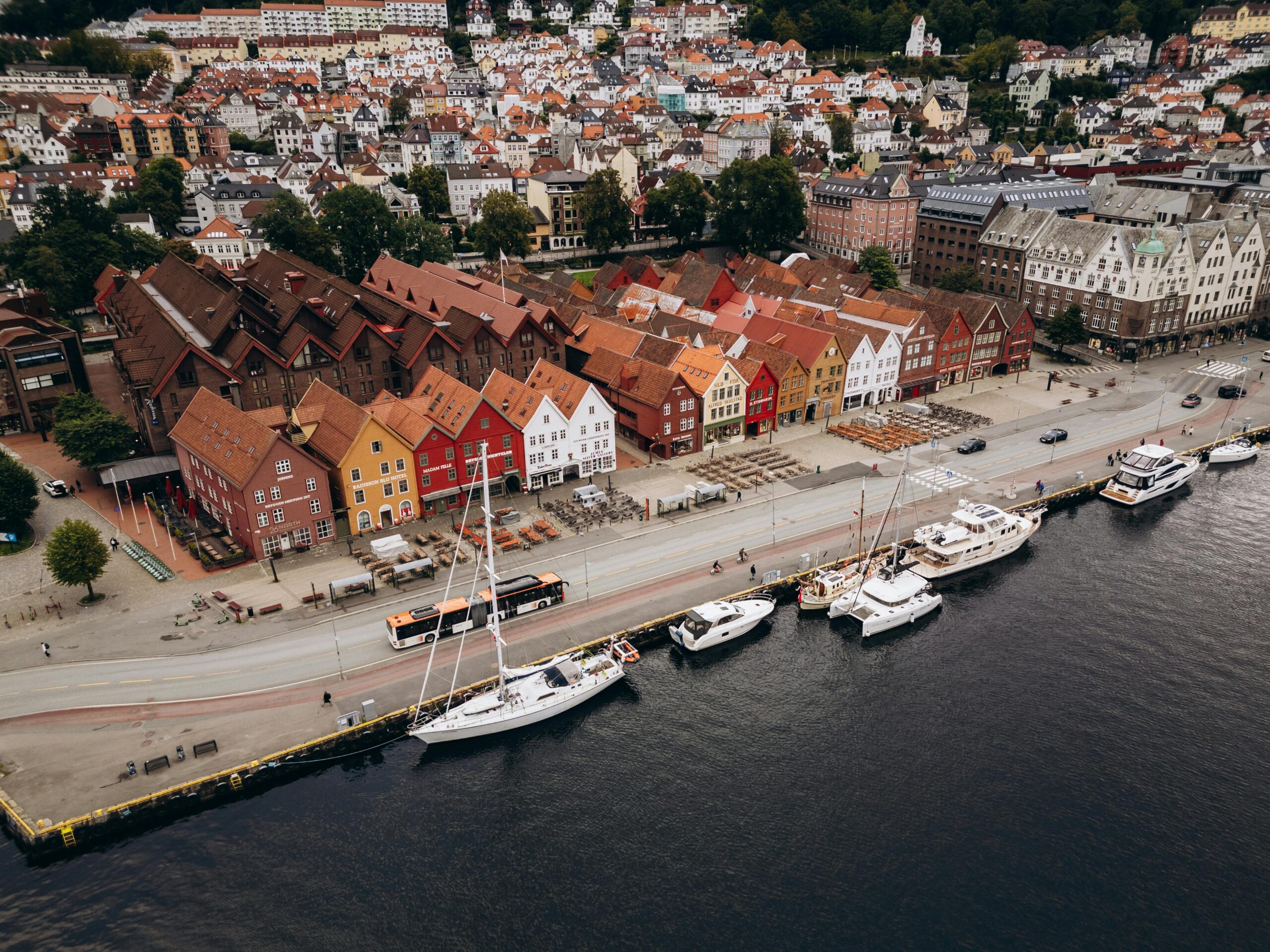
Bergen, a city we absolutely loved, is a place where history and stunning nature come together perfectly. Located on Norway’s west coast and surrounded by seven mountains, it has a unique and picturesque setting that felt both grand and intimate. The city’s history is incredibly rich. Founded by King Olav Kyrre in 1070, Bergen quickly grew to become Norway’s capital in the 13th century. However, it is most famous for its role in the Hanseatic League. From the 14th to the 16th centuries, Bergen was a major trading hub for this powerful German merchant league. The main product traded was dried cod, which was brought from Northern Norway and sold to the rest of Europe. This trade made Bergen one of the most important ports in Northern Europe. The most iconic symbol of this history is Bryggen, the historic wharf. This UNESCO World Heritage site is a row of colorful, tightly packed wooden houses that once served as the offices and homes of the Hanseatic merchants. Walking through the narrow, dark alleyways between the buildings felt like stepping back in time. We spent hours exploring the shops, galleries, and museums nestled within these historic structures. Beyond Bryggen, Bergen is famous for several other things. It’s known as the “Gateway to the Fjords,” and for good reason—it’s the perfect starting point for exploring some of the most spectacular fjords in the world. We were completely captivated by Bergen. The mix of historical charm, vibrant urban life, and the dramatic natural landscape made it a truly special place. The city felt alive and welcoming, and we especially loved the way the colorful houses of Bryggen stood out against the deep blue water of the harbor. Bergen was a definite highlight of our trip.
We reccomend:
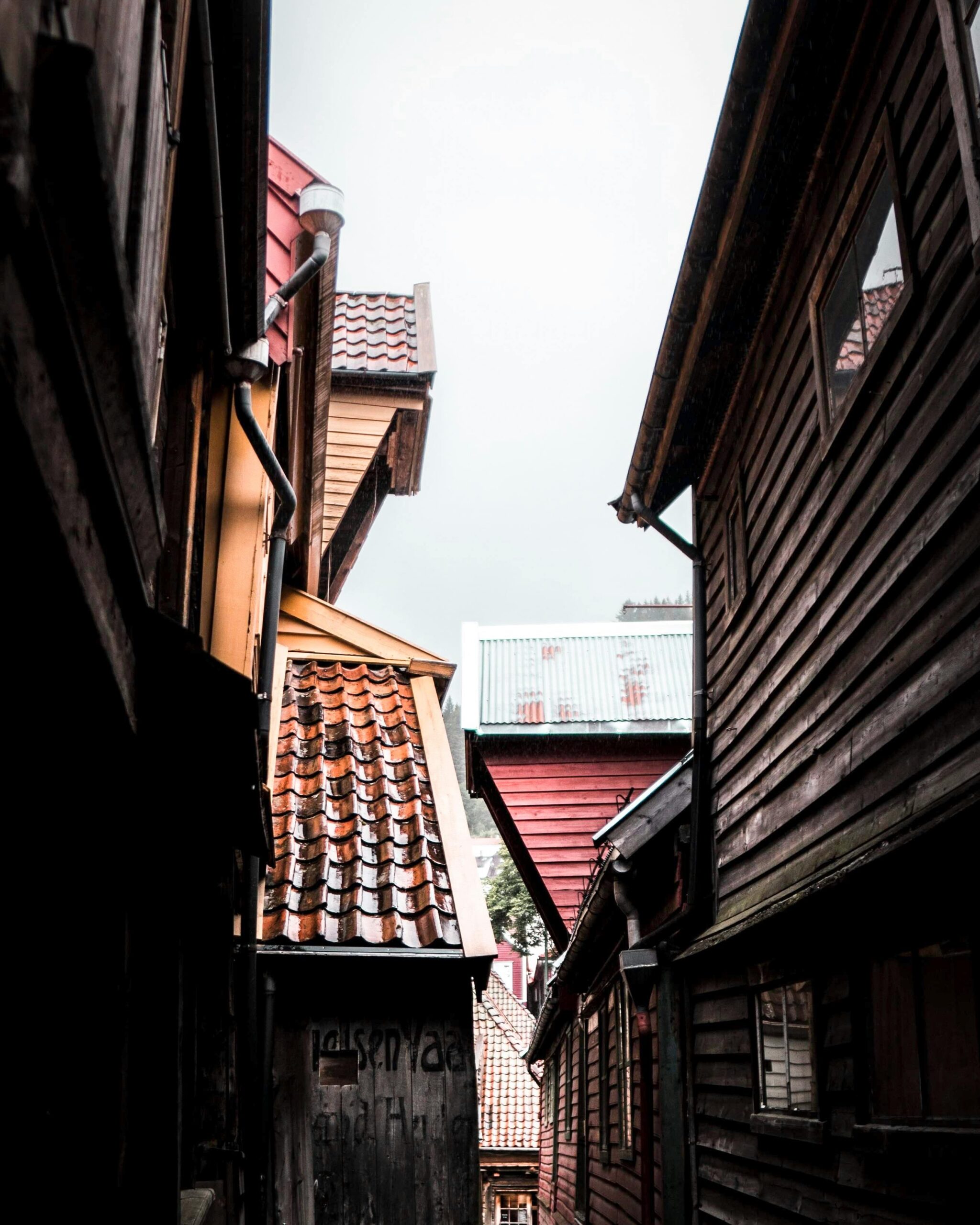
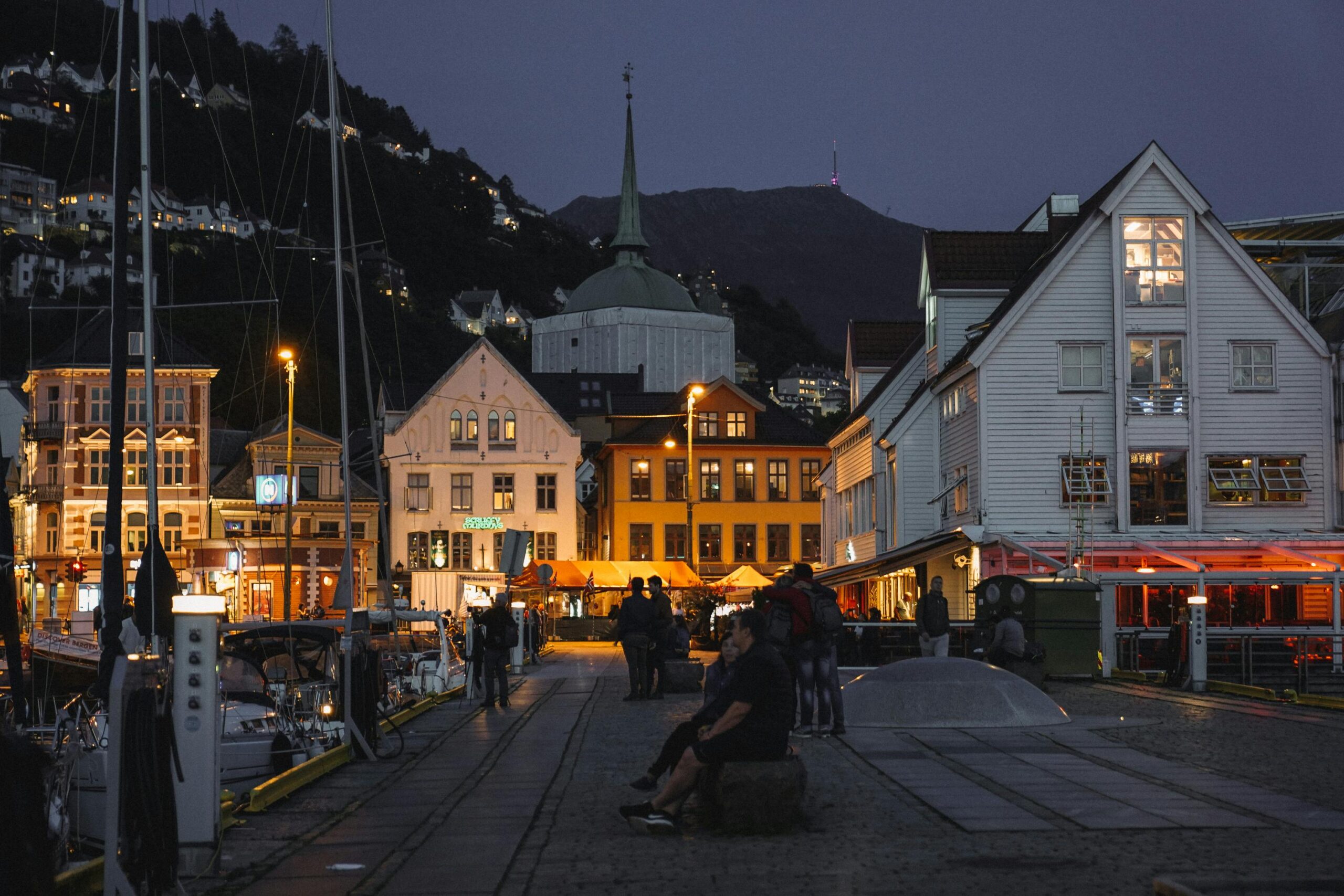
The historic heart of Bergen, with its vibrant and unique character, was one of our favorite parts of the city. The most famous area is Bryggen, the historic wharf, which we found to be incredibly charming. Bryggen’s history is fascinating, as it was once the central trading hub of the Hanseatic League from the 14th to the 16th century. This powerful German merchant guild made Bergen a major port, primarily trading in dried cod. While many of the buildings you see today were rebuilt after a fire in 1702, they were carefully reconstructed to preserve the original medieval layout, which is why the area is a UNESCO World Heritage site. We loved wandering through the narrow, cobbled alleyways that wind between the colorful wooden houses. It felt like we were stepping back in time. The buildings lean into each other, creating a wonderfully crooked and picturesque scene.

We loved finding Godt Brød on Vestre Torggaten. This cozy, two-story bakery is located in a charming yellow house and specializes in organic, freshly baked goods. The moment you walk in, you’re greeted by the amazing smell of bread. We tried their famous Skillingsbolle, a perfect cinnamon bun, and loved their fresh sandwiches.
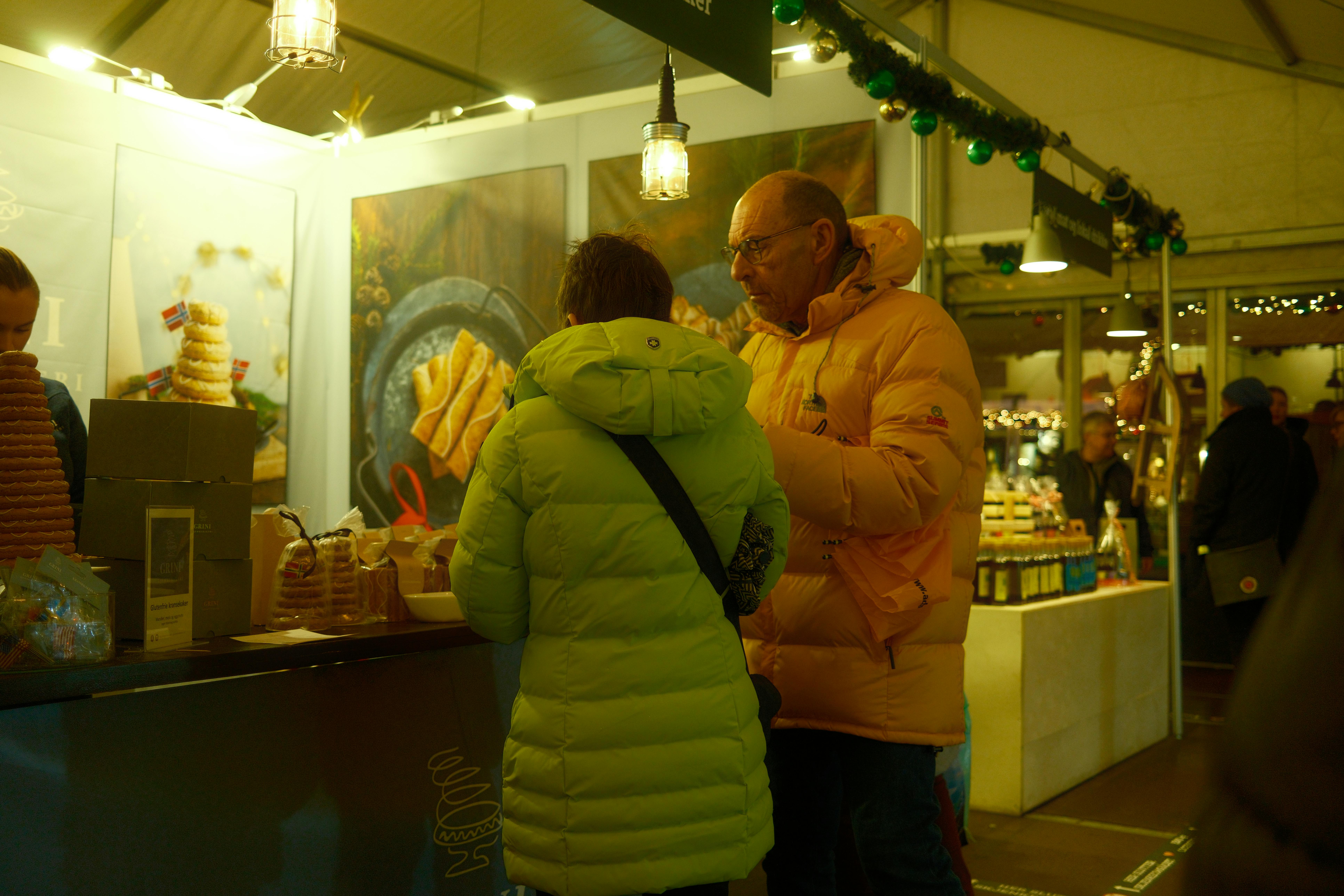
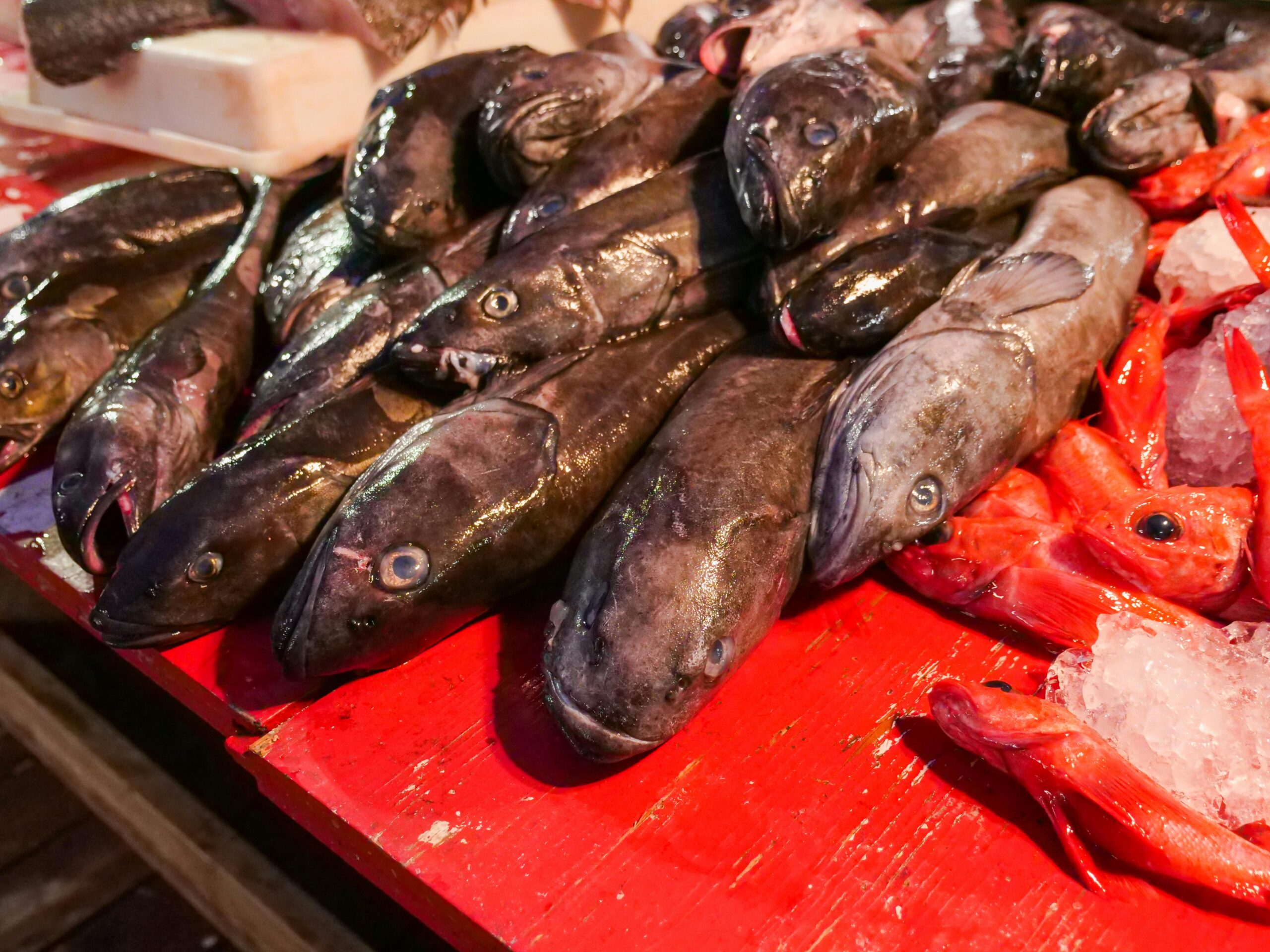
When we visited Bergen’s indoor market, we were expecting a bustling hub of local vendors selling fresh produce, cheeses, and all sorts of traditional Norwegian goods. What we found instead was something different altogether. While there were certainly stalls with seafood and some artisanal products, the overwhelming impression was that of a collection of restaurants and eateries. It felt less like a place to shop for ingredients and more like a destination for a prepared meal, with diners filling up tables and the air thick with the aroma of cooked food rather than the raw scents of a traditional market. It was a pleasant surprise, but it certainly wasn’t the kind of market we had pictured.
%